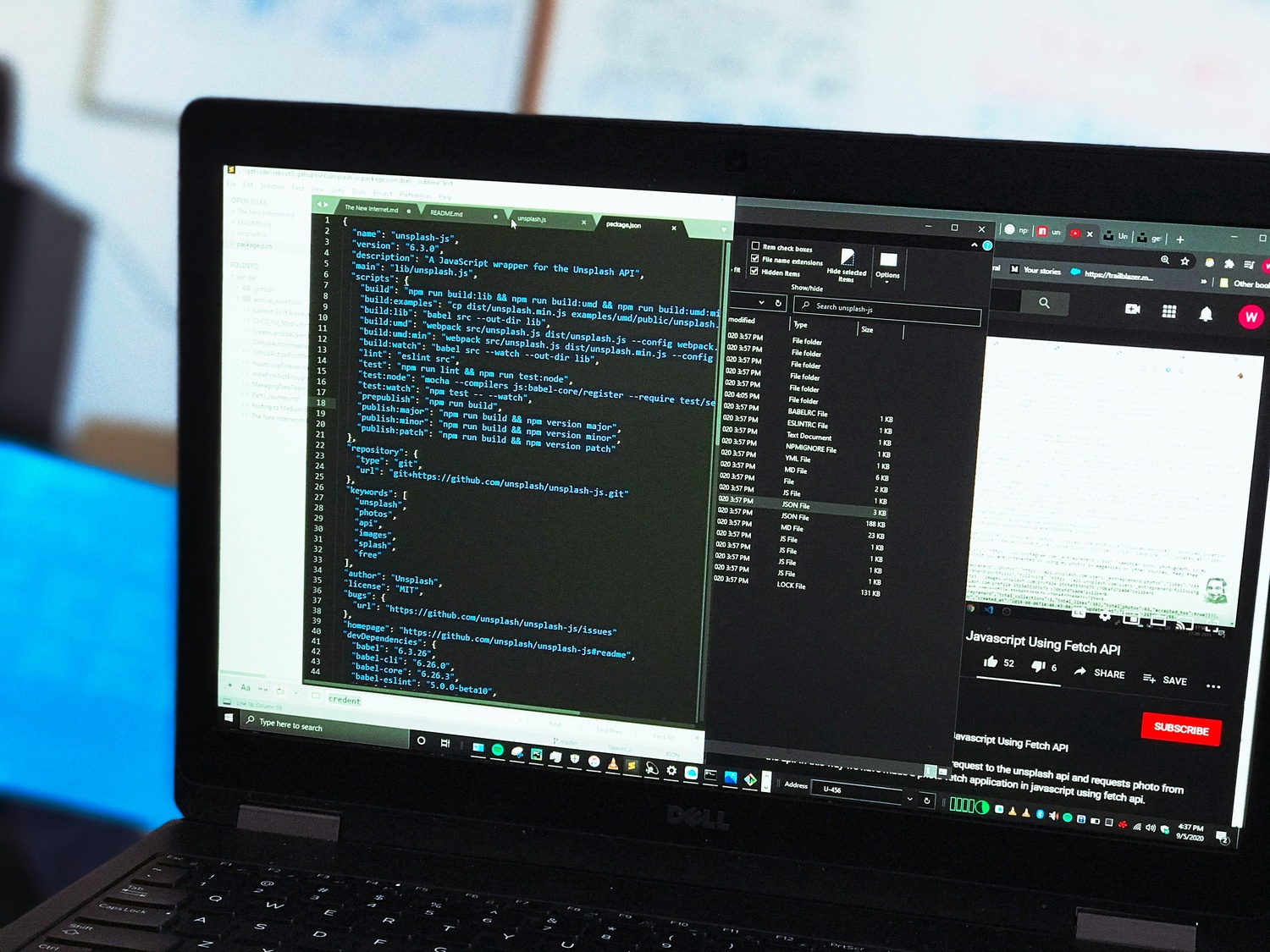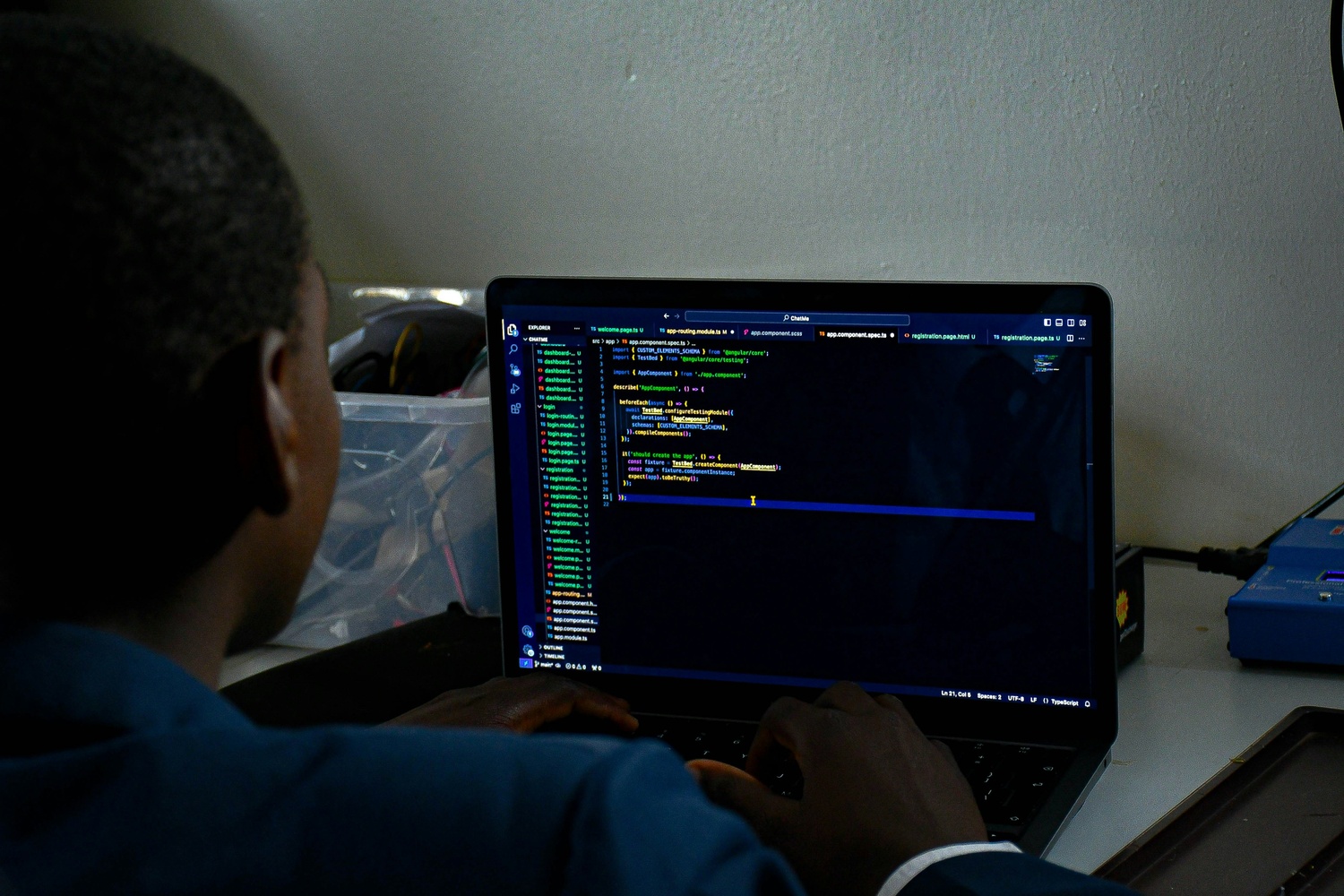Datadog has become the go-to for observability, but for many teams, it’s starting to feel a bit like using a jet to cross the street. It’s powerful, yes, but also complex, noisy, and expensive once your infrastructure scales. If you’ve ever spent hours sifting through dashboards or trimming metrics just to stay under budget, you’re not alone. In this guide, we’ll look at real alternatives that help you monitor and troubleshoot your systems without the bloat. Whether you’re after simpler pricing, faster setup, or tools that play nicer with your workflow, there’s a solution that fits how your team actually works.

1. AppFirst
AppFirst is a practical choice for teams exploring Datadog alternatives that simplify infrastructure management. Instead of dealing with endless YAML files, Terraform scripts, or custom DevOps tooling, developers just describe what their application needs: CPU, database, networking, Docker image, and AppFirst provisions everything automatically. It works across AWS, Azure, and GCP, delivering secure, compliant infrastructure without requiring a dedicated operations team. For teams that value speed and focus, it takes the complexity out of cloud deployment so developers can spend more time building products and less time managing pipelines.
In many ways, AppFirst acts as the infrastructure counterpart to what observability platforms like Datadog try to achieve, automation and visibility without the overhead. It provides built-in logging, monitoring, and alerting, along with cost visibility for each app and environment. Whether used as a SaaS service or deployed on-prem, AppFirst helps companies standardize infrastructure, stay compliant, and move faster without adding more tools to the stack.
Wichtigste Highlights:
- Automatic infrastructure provisioning across AWS, Azure, and GCP
- Built-in monitoring, logging, alerting, and auditing
- Security and compliance managed by default
- Works as SaaS or self-hosted deployment
- Transparent cost visibility by app and environment
- Reduces dependency on DevOps teams or custom scripts
Best For:
- Teams looking for Datadog alternatives focused on infrastructure simplicity
- Developers who want to deploy apps quickly without managing infra code
- Companies aiming to standardize cloud practices and compliance
- Engineering teams that prefer automation over manual configuration
Kontakte:
- Website: www.appfirst.dev

2. Apache SkyWalking
Apache SkyWalking is an open-source monitoring system built for the kind of complex environments most teams work with today – microservices, Kubernetes, and cloud-native setups. Instead of juggling different tools for logs, metrics, and traces, SkyWalking pulls everything into one place so you can actually see what’s happening across your system. It supports a wide mix of programming languages, which makes it easy to plug into almost any stack without a ton of extra setup.
What makes SkyWalking stand out is how it handles scale and flexibility. It can process huge volumes of telemetry data, connect with tools like Prometheus and OpenTelemetry, and even use machine learning to spot unusual patterns. Its built-in database, BanyanDB, keeps observability data consistent and fast to query, while eBPF support helps with low-level performance monitoring inside Kubernetes. It’s the kind of tool teams pick when they want serious visibility without getting tied to a specific vendor or paying for features they don’t need.
Wichtigste Highlights:
- End-to-end distributed tracing and service topology mapping
- Works with major languages through built-in agents
- Combines metrics, logs, and traces in one workflow
- AI-assisted alerts and anomaly detection
- Backed by BanyanDB, a purpose-built observability database
Best For:
- Teams running microservices or cloud-native workloads
- Developers using OpenTelemetry or Prometheus setups
- Organizations looking for open, flexible observability tools
- Engineering teams managing large-scale distributed systems
Kontakte:
- Website: skywalking.apache.org
- Twitter/X: x.com/asfskywalking
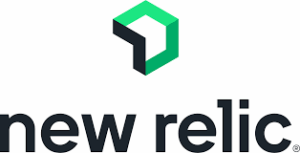
3. New Relic
New Relic takes the “one platform for everything” approach to observability. It pulls together performance data from apps, servers, logs, and even mobile environments into one clear view. Instead of flipping between multiple tools, engineers can see metrics, traces, and alerts in one dashboard. It’s built to work across the entire stack and supports hundreds of integrations, from AWS and Kubernetes to Java, Node.js, and Python.
Compared to Datadog, New Relic often appeals to teams that want deep visibility without complex pricing or licensing. It uses a pay-for-what-you-use model, which keeps costs predictable as data grows. The platform’s AI and automation features help flag issues early, while the flexible dashboards make it easier for different teams: like DevOps, security, or product engineering, to stay on the same page. It’s practical, not flashy, and that’s what makes it useful.
Wichtigste Highlights:
- Full-stack observability across apps, infrastructure, and security
- Real-time data visualization and alerting
- Transparent usage-based pricing
- AI-assisted anomaly detection and automated insights
- Meets major compliance standards (SOC 2, ISO 27001, GDPR)
Best For:
- Teams managing complex, distributed systems
- Companies that want one place to track all performance data
- DevOps groups focused on reliability and uptime
- Organizations looking for straightforward, flexible pricing
Kontakte:
- Website: newrelic.com
- Phone: (415) 660-9701
- Address: Atlanta 1100 Peachtree Street NE, Suite 2000, Atlanta, GA 30309, USA
- LinkedIn: www.linkedin.com/company/new-relic-inc-
- Facebook: www.facebook.com/NewRelic
- Instagram: www.instagram.com/newrelic
- Twitter/X: x.com/newrelic
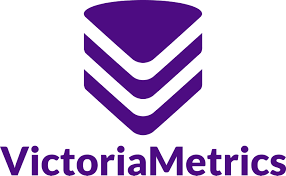
4. VictoriaMetrics
VictoriaMetrics keeps things simple. It’s an open-source observability stack that handles metrics, logs, and traces without all the usual complexity. It’s fast, lightweight, and designed to scale smoothly from small personal projects to huge distributed systems. Whether you run it on-premise or in the cloud, setup is quick and doesn’t require a massive infrastructure team to maintain.
A big part of its appeal is how efficiently it handles data. The platform runs on a high-performance time-series database and works well with Kubernetes and OpenTelemetry. For teams that prefer open-source tools and want to avoid the overhead of large commercial platforms, VictoriaMetrics is a solid choice. It focuses on doing the essentials really well: storing, querying, and visualizing observability data without making you pay for bells and whistles you don’t use.
Wichtigste Highlights:
- Complete observability stack covering metrics, logs, and traces
- Works with Kubernetes and OpenTelemetry standards
- Supports both open-source and managed cloud options
- Includes anomaly detection powered by AI models
- Easy to deploy, even at large scale
Best For:
- Teams that want fast, open-source observability tools
- Developers managing resource-heavy or cost-sensitive systems
- Organizations looking for simple, efficient monitoring setups
- Engineering teams that value flexibility and easy integration
Kontakte:
- Website: victoriametrics.com
- LinkedIn: www.linkedin.com/company/victoriametrics
- Facebook: www.facebook.com/VictoriaMetrics
- Twitter/X: x.com/VictoriaMetrics

5. Dynatrace
Dynatrace is one of those platforms that tries to make sense of everything happening in your systems: apps, infrastructure, user experience, logs, security, you name it. It’s built with automation and AI at the core, so instead of just showing raw data, it actually helps teams figure out what’s going on and how to fix it. The built-in AI engine, called Davis, keeps an eye on your setup in real time, spotting weird behavior, finding the cause, and even predicting issues before they turn into bigger problems. It plays nicely with AWS, Azure, GCP, Kubernetes, Prometheus, and other major tools, so most teams can plug it in without a huge learning curve.
What’s nice about Dynatrace is how it connects the dots. It doesn’t just dump charts and metrics on you, it shows how your services interact and where things might break. Its Automation Engine takes that a step further by turning insights into real actions, so teams can spend less time firefighting and more time improving things. The pricing model is flexible too, based on actual usage, which is a relief compared to traditional enterprise licensing. It’s a solid choice for teams that want an observability platform that feels smart and helps lighten the load instead of adding to it.
Wichtigste Highlights:
- AI-driven insights for apps, infrastructure, and user experience
- Davis AI engine pinpoints root causes and detects anomalies
- Connects seamlessly with Kubernetes, AWS, GCP, Azure, and Prometheus
- Built-in automation to handle alerts and workflows
- Usage-based pricing with clear cost tracking
Best For:
- Teams running large or hybrid cloud environments
- Companies that want AI to handle more of the heavy lifting
- Organizations needing full visibility across multiple systems
- Teams that prefer automated troubleshooting over manual digging
Kontakte:
- Website: www.dynatrace.com
- Phone: 1-844-900-3962
- Email: dynatraceone@dynatrace.com
- Address: 401 Castro Street, Second Floor Mountain View, CA, 94041 United States of America
- LinkedIn: www.linkedin.com/company/dynatrace
- Facebook: www.facebook.com/Dynatrace
- Instagram: www.instagram.com/dynatrace
- Twitter/X: x.com/Dynatrace
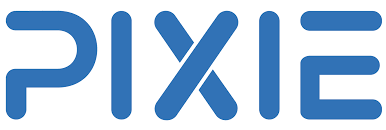
6. Pixie
Pixie is an open-source observability tool made specifically for Kubernetes. It’s lightweight, quick to set up, and doesn’t require you to touch your code. Thanks to eBPF, Pixie collects data directly from your cluster so you can see metrics, traces, and logs almost instantly. It runs entirely inside your environment, no external data storage or agents to manage, which makes it both fast and privacy-friendly. You can check system health, debug requests, and explore live data right from your command line or browser.
What makes Pixie stand out is how developer-friendly it is. You can write and share your own scripts to automate debugging, or use ones from the Pixie community. It’s a very “hands-on” tool, simple enough to use daily, but flexible enough for deeper troubleshooting when things get tricky. For teams working heavily with Kubernetes, Pixie takes the pain out of observability and lets you stay focused on shipping instead of instrumenting.
Wichtigste Highlights:
- Runs completely inside Kubernetes clusters
- Command-line and browser access for real-time insights
- Script-based debugging through community or custom scripts
- No external data collection or vendor dependency
- Backed by the Cloud Native Computing Foundation (CNCF)
Best For:
- Developers running apps in Kubernetes
- Teams that want fast, in-cluster visibility
- Companies that care about data privacy and control
- Engineers who prefer using scripts over dashboards
Kontakte:
- Website: px.dev
- Twitter/X: x.com/pixie_run

7. SigNoz
SigNoz is an open-source observability platform that gives you everything: APM, logs, metrics, and alerts, in one place. It’s built around OpenTelemetry, which means it plays well with most modern systems and doesn’t lock you into a specific vendor. You can run it on your own servers or use their cloud version, and it uses ClickHouse as the database under the hood for speed and efficiency. Queries are flexible too, you can use PromQL, ClickHouse SQL, or just the built-in builder, depending on what you’re comfortable with.
One of the best parts about SigNoz is how straightforward it feels. There’s no per-user or per-host pricing nonsense; you just pay for the data you send. It also correlates logs, metrics, and traces, so when something breaks, you can follow the trail in one interface without jumping between tools. It’s a good fit for teams who like open-source flexibility, predictable costs, and full control over their observability stack without dealing with surprise bills or complicated licensing.
Wichtigste Highlights:
- OpenTelemetry-native with metrics, logs, traces, and alerts
- Works in cloud, self-hosted, or hybrid setups
- Correlates all signals for easier debugging
- Transparent, usage-based pricing
- Active open-source community with frequent updates
Best For:
- Teams that want a self-hosted or open-source Datadog alternative
- Developers using OpenTelemetry in their projects
- Organizations that value cost transparency and control
- Engineering teams that prefer owning their observability data
Kontakte:
- Website: signoz.io
- Email: support@signoz.io
- LinkedIn: www.linkedin.com/company/signozio
- Twitter/X: x.com/SigNozHQ
8. Grafana
Grafana is one of those tools that almost every engineer runs into at some point—it’s basically the go-to for visualizing and exploring data. It pulls in metrics, logs, traces, and profiles from tons of sources and lets you tie them all together in one place. The Grafana Cloud platform builds on that, bundling open-source projects like Loki, Mimir, Tempo, and Pyroscope into a managed stack. It’s designed to help teams monitor systems, troubleshoot faster, and even bring in a bit of AI to spot issues and automate routine tasks.
What keeps Grafana popular is how open and flexible it is. It works with just about anything: Prometheus, OpenTelemetry, AWS, MySQL, Kafka, you name it, and doesn’t try to lock you into a single ecosystem. The dashboards are easy to customize, and the alerting and incident management tools help keep teams ahead of outages. With features like adaptive telemetry and AI-assisted analysis, Grafana Cloud now goes beyond visualization, it actually helps reduce data noise and cost while improving response time.
Wichtigste Highlights:
- Centralized observability across metrics, logs, traces, and profiles
- Built on open-source tools like Loki, Mimir, Tempo, and Pyroscope
- AI-powered insights and contextual root cause analysis
- Free tier with generous limits for smaller teams
- Dashboards, alerts, and incident workflows all in one place
Best For:
- Teams that want open, flexible observability without vendor lock-in
- Developers who already use Prometheus or OpenTelemetry
- Organizations looking for an easy, visual way to monitor complex systems
- Engineering teams that need collaboration-friendly dashboards and alerting
Kontakte:
- Website: grafana.com
- Email: info@grafana.com
- LinkedIn: www.linkedin.com/company/grafana-labs
- Facebook: www.facebook.com/grafana
- Twitter/X: x.com/grafana

9. Netdata
Netdata focuses on real-time observability with a heavy emphasis on speed and clarity. It monitors infrastructure, applications, and networks down to the second, literally every metric, every second. It’s lightweight, runs on-prem by default, and now includes Netdata AI, which automatically investigates incidents, explains what happened, and suggests fixes in plain English. For teams that don’t have time to configure complex monitoring setups, Netdata offers zero-configuration deployment and instant visibility into system health.
What makes Netdata different is how it keeps data local instead of centralizing it in the cloud. That means better performance, lower costs, and full control over your data. It’s built for engineers who want real answers, not more dashboards to manage. The platform’s distributed design keeps it fast even at scale, and its AI assistant helps teams troubleshoot issues that might otherwise take hours to find. In short, Netdata gives you detailed, per-second insights without all the usual overhead.
Wichtigste Highlights:
- Real-time observability with per-second metrics and zero sampling
- AI-assisted root cause analysis in natural language
- Runs locally with full data ownership and privacy
- Works across bare metal, virtualized, and cloud systems
- Lightweight and scalable edge-native architecture
Best For:
- Teams that want high-resolution, real-time monitoring
- Organizations with strict data privacy or on-prem requirements
- Engineers looking for an AI-assisted troubleshooting companion
- Small and mid-sized teams that need easy, zero-config observability
Kontakte:
- Website: www.netdata.cloud
- LinkedIn: www.linkedin.com/company/netdata-cloud
- Facebook: www.facebook.com/linuxnetdata
- Twitter/X: x.com/netdatahq
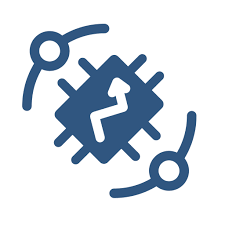
10. ThingsBoard
ThingsBoard is an open-source IoT platform built to manage connected devices, collect data, and visualize it in real time. It supports standard IoT protocols like MQTT, CoAP, and HTTP, making it flexible enough to fit into most industrial or smart device setups. The platform can run in the cloud or on-premise, and it’s designed for scalability and fault tolerance so systems can keep running smoothly even under heavy load. With its dashboard builder, users can easily monitor telemetry data, manage assets, and share live visualizations without writing extra code.
A big part of ThingsBoard’s strength is how customizable it is. Teams can create rule chains to process data, trigger alerts, or even automate workflows when specific conditions are met. It supports multi-tenancy, device authentication, and encryption out of the box, and can scale up using a microservices architecture. Whether you’re tracking sensors, managing devices, or running industrial SCADA systems, ThingsBoard provides a stable, open foundation for IoT monitoring and control.
Wichtigste Highlights:
- Supports MQTT, CoAP, and HTTP for device communication
- Rule engine for automation and alerting
- Scalable architecture with both monolithic and microservices options
- Cloud and on-premise deployment supported
- Open-source under Apache 2.0 license
Best For:
- Teams building or managing IoT platforms
- Developers who prefer open-source and flexible integrations
- Organizations needing scalable device monitoring and data visualization
- Companies managing industrial or smart infrastructure systems
Kontakte:
- Website: thingsboard.io
- LinkedIn: www.linkedin.com/company/thingsboard
- Facebook: www.facebook.com/thingsboard
- Instagram: www.instagram.com/thingsboard_iot
- Twitter/X: x.com/thingsboard

11. Splunk
Splunk is often seen as a strong Datadog alternative for organizations that need to unify observability and security data in one place. It’s now part of Cisco, and the platform focuses on bringing together logs, metrics, and traces across multi-cloud and on-prem systems. Splunk’s AI-driven data engine helps teams detect anomalies, predict incidents, and streamline investigations without needing to juggle multiple tools. The platform supports a wide range of integrations and open standards like OpenTelemetry, making it easier to fit into existing workflows.
Teams use Splunk to monitor application health, analyze performance, and automate incident responses. Its modular structure: spanning Splunk Cloud, Enterprise Security, and Observability Cloud, lets companies choose what fits their setup best. While it’s known for handling large, complex data environments, its flexible architecture allows both smaller teams and global enterprises to gain real-time visibility into their systems.
Wichtigste Highlights:
- AI-powered observability and threat detection
- Unified view of logs, metrics, and traces
- Works across AWS, Azure, GCP, and on-prem systems
- OpenTelemetry and SDK support for custom integrations
Best For:
- Enterprises needing both observability and security analytics
- Teams managing hybrid or multi-cloud environments
- Organizations prioritizing data-driven automation and compliance
Kontakte:
- Website: www.splunk.com
- Phone: +1 415.848.8450
- LinkedIn: www.linkedin.com/company/splunk
- Facebook: www.facebook.com/splunk
- Instagram: www.instagram.com/splunk
- Twitter/X: x.com/splunk
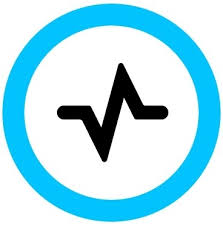
12. Graylog
Graylog provides another practical alternative to Datadog, especially for teams that want control over their log management and costs. It focuses on log collection, analysis, and security monitoring without heavy infrastructure requirements. The platform supports deployment across cloud, on-prem, or hybrid environments, and includes tools for centralized logging, SIEM, and API monitoring. Built-in AI helps speed up investigations, reduce noise, and surface relevant insights faster.
Unlike some tools that bundle pricing with ingestion or users, Graylog’s flexible model lets teams store and route data efficiently while maintaining visibility. It supports long-term data retention and integrates easily into existing security and IT operations. For teams that prefer hands-on control, Graylog’s open architecture makes customization straightforward.
Wichtigste Highlights:
- AI-powered security and log management
- Works across on-prem, cloud, or hybrid setups
- Flexible routing and storage with built-in pipeline management
- Transparent pricing without vendor lock-in
- Integration-ready with standard protocols and APIs
Best For:
- Security and operations teams managing complex systems
- Organizations needing cost control over data retention
- Teams preferring customizable and self-managed observability stacks
Kontakte:
- Website: graylog.org
- Email: info@graylog.com
- Address: 1301 Fannin St, Ste. 2000 Houston, TX 77002
- LinkedIn: www.linkedin.com/company/graylog
- Facebook: www.facebook.com/graylog
- Twitter/X: x.com/graylog2

13. Coralogix
Coralogix stands out among Datadog alternatives for its emphasis on real-time, index-free observability. It unifies logs, metrics, traces, and security data through its DataPrime engine, which enables querying and correlation without pre-indexing or data loss. This approach allows teams to ingest and retain large volumes of telemetry while controlling costs by storing data directly in their own cloud environment.
The platform supports in-stream analytics, anomaly detection, and AI-powered monitoring for everything from infrastructure to AI systems. Coralogix also includes compliance and security capabilities, offering visibility across entire digital ecosystems without vendor lock-in. Its OpenTelemetry support and extensive integration catalog make it a solid fit for teams seeking scalability and transparency in observability.
Wichtigste Highlights:
- Unified observability platform with index-free querying
- Long-term, cost-efficient data retention
- AI-based anomaly detection and root cause analysis
- Native OpenTelemetry and open-format data storage
Best For:
- Teams seeking scalable, real-time observability at lower cost
- Companies wanting to avoid vendor lock-in with open data formats
- Organizations using AI systems or needing deep anomaly detection
Kontakte:
- Website: coralogix.com
- Email: support@coralogix.com
- Address: 400 Concar Drive Tenant, San Mateo, CA 94402
- LinkedIn: www.linkedin.com/company/Coralogix
- Twitter/X: x.com/coralogix
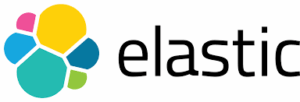
14. Elastic
Elastic, the company behind Elasticsearch, is often a go-to for teams that want an open, flexible alternative to Datadog. It’s not just about search anymore – Elastic has evolved into a full platform for observability, security, and AI-powered analytics. You can pull in data from pretty much anywhere, analyze it in real time, and use built-in machine learning to spot issues before they turn into bigger problems. The platform runs smoothly in the cloud or on-prem, and its “Search AI Platform” is designed to handle everything from logs and metrics to large AI-driven workloads.
What makes Elastic stand out is its ecosystem: Elasticsearch, Logstash, Kibana, and Beats, all working together to give teams visibility across their systems. Whether you’re trying to monitor applications, build search experiences, or manage infrastructure data, the tools are already in place. It’s open source at its core, so there’s room to customize, integrate, and scale however you like.
Wichtigste Highlights:
- Combines observability, search, and security in one stack
- Machine learning and AI for smarter insights
- Works across cloud and on-prem environments
- Vector database optimized for generative AI
- Integrates easily with OpenTelemetry and major cloud providers
Best For:
- Teams looking for open-source Datadog alternatives
- Companies that want deep observability and flexibility
- Developers building custom analytics or search tools
Kontakte:
- Website: www.elastic.co
- Telefon: + 1 202 759 9647
- Email: info@elastic.co
- Anschrift: 88 Kearny St Floor 19 San Francisco, CA 94108
- LinkedIn: www.linkedin.com/company/elastic-co
- Facebook: www.facebook.com/elastic.co
- Twitter/X: x.com/elastic
15. Prometheus
Prometheus is probably the name you’ve already heard if you’ve ever dealt with metrics in a cloud-native setup. It’s open source, fast, and simple enough to run without getting stuck in vendor lock-in. The system collects and stores time-series data, which you can query using PromQL – a surprisingly powerful language once you get the hang of it. It’s built for reliability and independence, so each Prometheus server can run on its own without needing a massive infrastructure to back it up.
Its strength really shows in Kubernetes environments. Prometheus automatically discovers new services as they spin up, keeping monitoring consistent even in complex systems. Add Alertmanager to the mix, and you’ve got a way to get real-time alerts without drowning in notifications. It’s one of those tools that just quietly does its job: flexible, fast, and dependable.
Wichtigste Highlights:
- Open-source and community-driven monitoring system
- PromQL for flexible querying and analysis
- Integrates deeply with Kubernetes and containerized apps
- Operates independently with local storage
- Huge ecosystem of exporters and integrations
Best For:
- Teams running containerized or microservices architectures
- Developers who prefer open-source and self-managed tools
- Organizations looking for straightforward, reliable monitoring
Kontakte:
- Website: prometheus.io
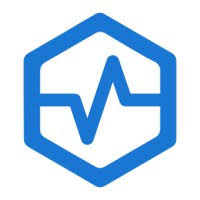
16. Uptrace
Uptrace feels like the “no-frills but powerful” Datadog alternative. It’s built on OpenTelemetry and gives you traces, metrics, and logs all in one place, without the sticker shock that comes with some enterprise tools. The setup is quick, and you can choose to self-host it for free or go with the managed cloud version if you don’t want to deal with maintenance. It’s designed for developers who care about performance data but don’t want to get buried in dashboards and pricing tiers.
The platform gives you clear, intuitive views of what’s happening inside your systems – from latency metrics to slow endpoints to service relationships. It plays nicely with Prometheus, CloudWatch, FluentBit, and a bunch of other tools you might already be using. The focus is on transparency and cost control, making it ideal for teams that want reliable observability without paying enterprise prices.
Wichtigste Highlights:
- Unified platform for traces, metrics, and logs
- Built on OpenTelemetry for flexibility and vendor neutrality
- Easy integration with Prometheus, FluentBit, and CloudWatch
- Transparent, usage-based pricing
- Works in both cloud and self-hosted environments
Best For:
- Teams seeking affordable full-stack observability
- Developers using OpenTelemetry-based instrumentation
- Companies that want powerful monitoring with simple setup and pricing
Kontakte:
- Website: uptrace.dev
- Email: support@uptrace.dev
Schlusswort
Finding the right Datadog alternative isn’t about picking a cheaper tool, it’s about choosing one that fits how your team actually works. Some platforms give you more control and flexibility through open-source ecosystems. Others, bring advanced automation and AI to simplify large-scale operations. Then there are tools like AppFirst or Netdata that focus on cutting out unnecessary complexity so developers can stay focused on shipping code instead of managing infrastructure.
The best choice depends on what your team values most: visibility, automation, cost efficiency, or simplicity. Each of these tools tackles observability and monitoring in its own way, but they all share one goal, helping you understand your systems better without getting lost in them. The key is to find the balance that keeps your stack reliable, your workflows clean, and your developers free to build what matters.
